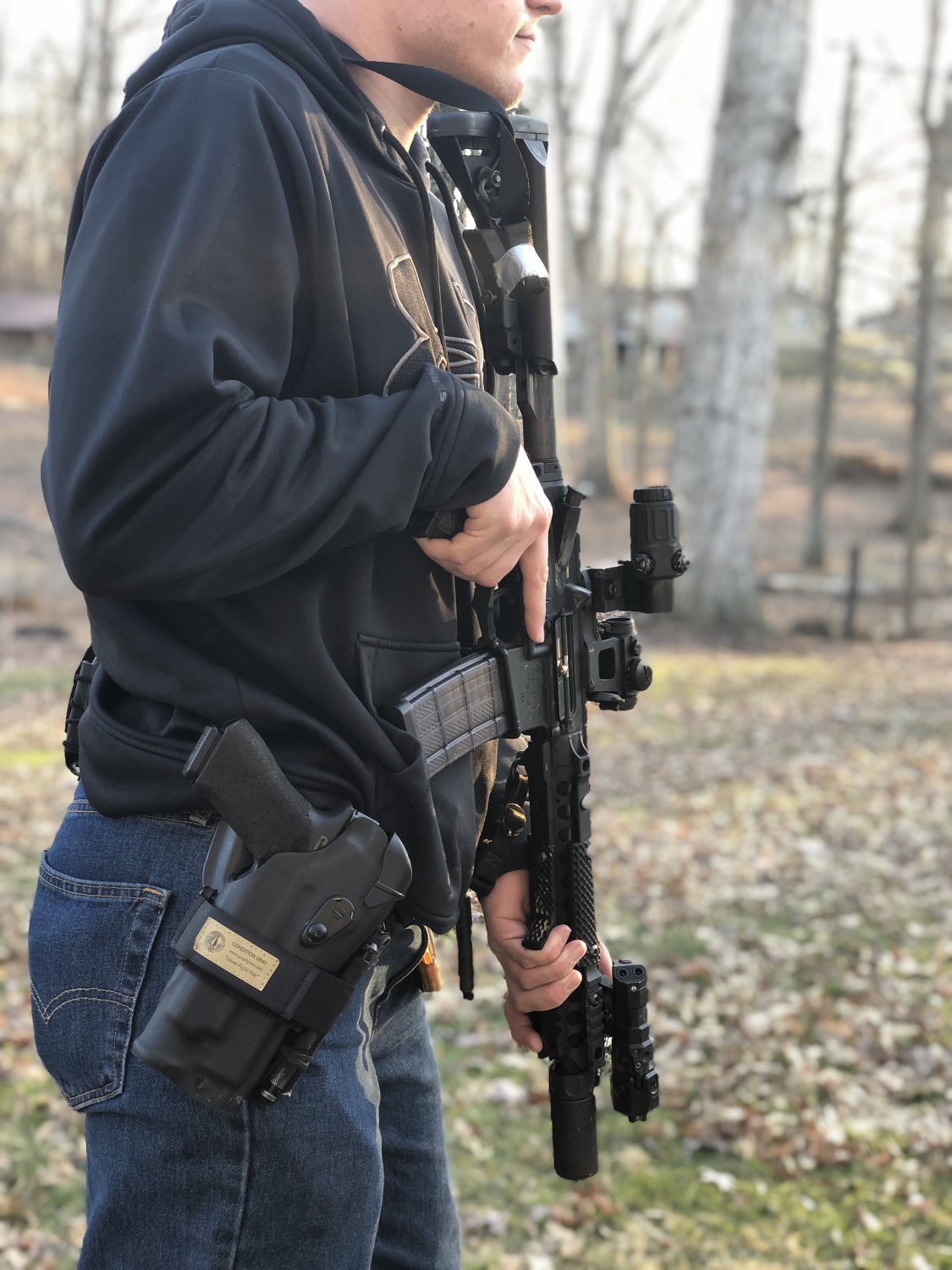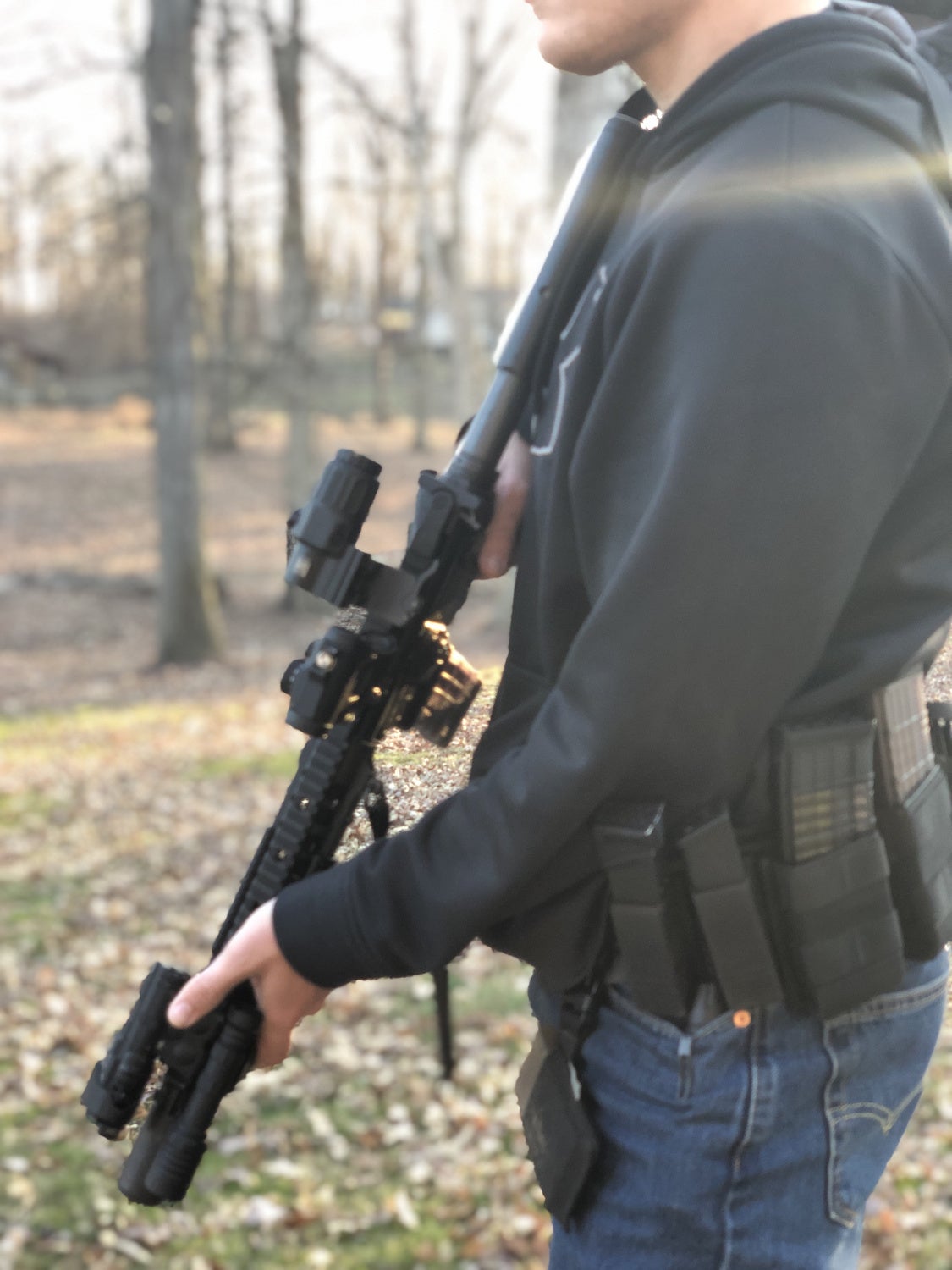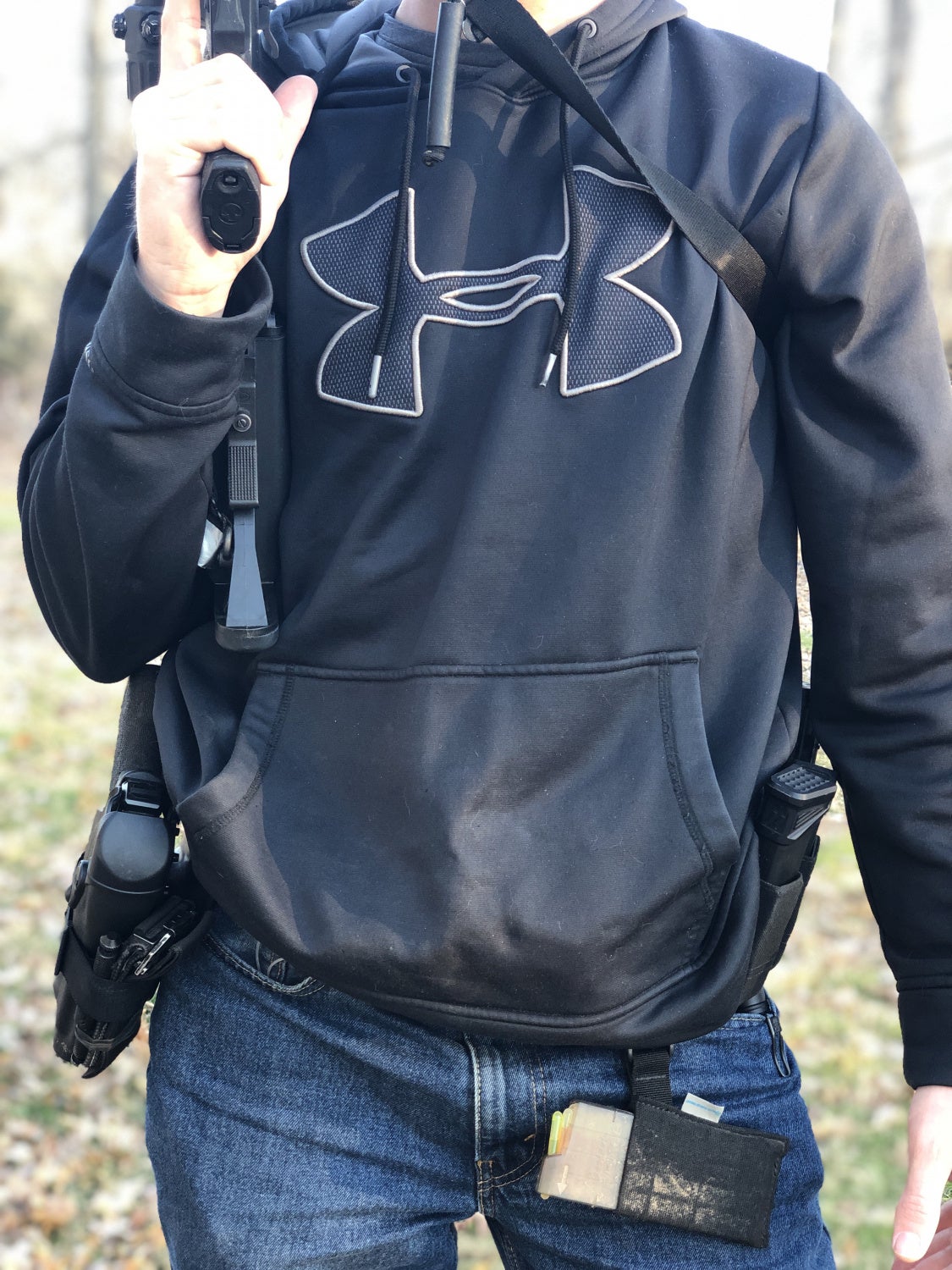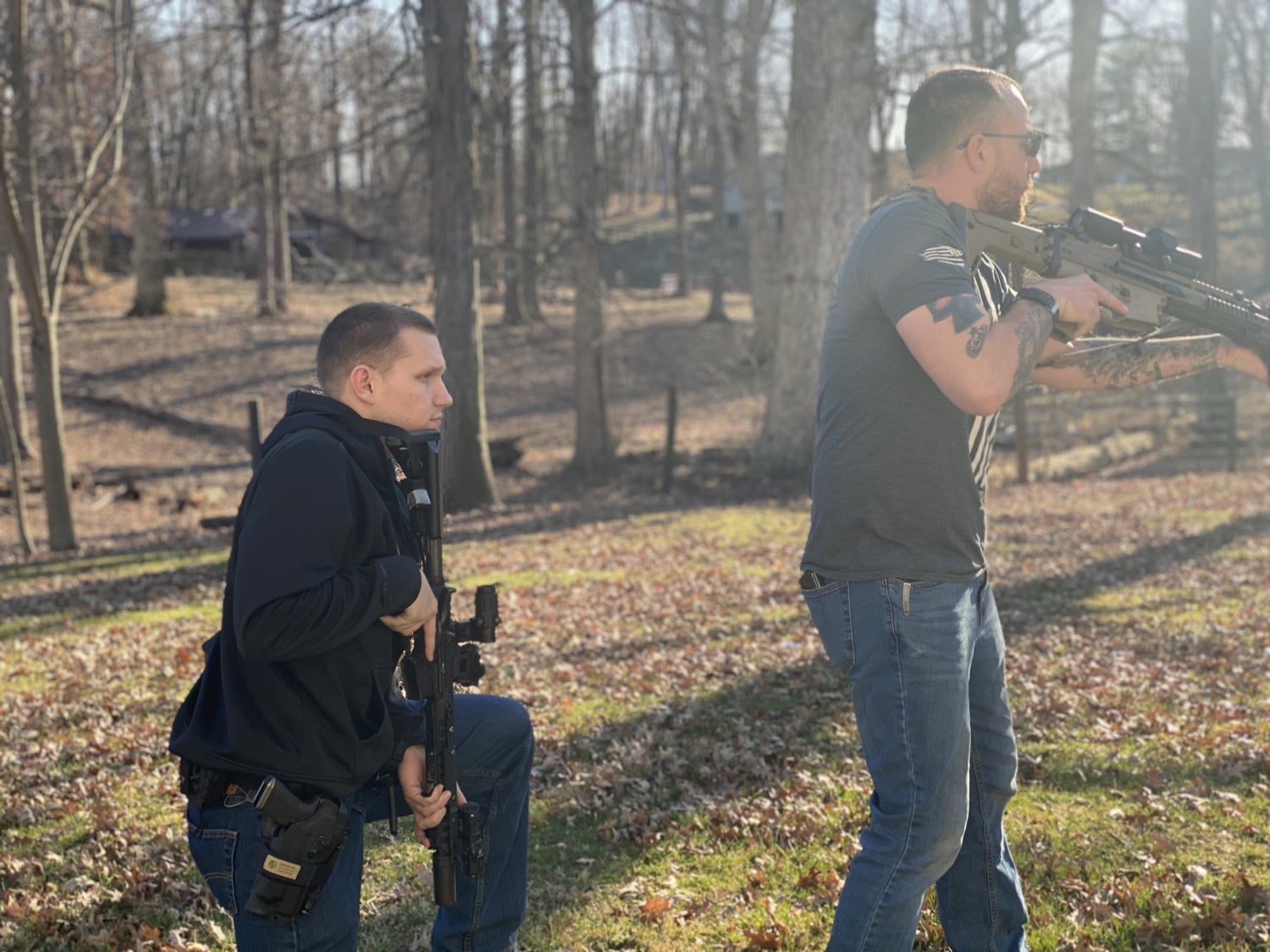
Carry positions allow the shooter to safely work in confined spaces.
The purpose of carry positions is to have your gun readily accessible, but the scenario prevents direct use. This means you are not in a position to point your weapon at a known threat or place a threat could present itself from, without first moving to a better position. An example would be in a team environment where you have teammates in front of you getting ready to enter a doorway as seen in the article cover picture above. You could also use a carry position in a scenario where a family member was between you and an intruder. Often when in more confined areas, carry positions allow us to move somewhere we can safely get into a ready position. We do not want to point our weapon at our partners or bystanders. Carry positions allow us to safely move and easily orient our gun so as not to violate safety rules while moving to an improved position. The two carry positions we use are low and high carry.
Low Carry Technique
Low carry is where the rifle is pointed straight down at the ground with the stock away from your shoulder. This places the rifle at a 90-degree angle from the ground.

Low carry is seen here where the rifle is pointed 90 degrees down and with the stock pressed out slightly away from the chest.
This is not the same as belly carry, where the muzzle points at an outward angle. Belly carry results in a lack of awareness of where the muzzle is oriented. It also does not allow for use in as confined spaces as low carry, where the muzzle points straight down.

While the rifle is still pointed at the ground, the outward angle of belly carry does not allow for use in as confined space due to the outward angle.
High Carry Technique

Keeping the barrel perfectly 90 degrees up allows us to easily know the direction of our muzzle at all times.
High carry is where the gun is pointed straight up. Meanwhile, the stock is carried as low as possible and rides between your elbow and your core. Keeping the stock of the rifle locked between your elbow and your core is important. This reduces unnecessary muscle fatigue and places more strain on your skeletal system.

Notice how the elbow is low and wedging the stock between the elbow and core. This makes even more of a difference with heavier rifles.
Each position should be practiced slick and with kit. This prevents snag hazards or issues with the way gear is set up.
Application
A key principle of both positions is that the gun is pointed perfectly straight up or down. This is very important and prevents complacency from eroding a proper carry position. The situation will dictate whether a high or low carry is the preferred position. Recently there has been a large argument over high or low carry. The answer is both, but in the correct application and scenario. On the bottom story of a house, it does not make sense to high carry. Thin flooring provides little protection for those above from a discharged round. Conversely, the opposite is true if working on the top floor of a multiple story structure – low carry would not be the optimal position.

Thin flooring provides little to no ballistic protection.
High vs low carry will also matter when you are on different positional levels from those working close to you. If someone is in a crouched position it is better to be in a low carry than a high carry. For the person standing we see in the pictures below that he is in a good position to be in a ready position. If there was another team member in front of him, a high carry would work well.

Here we see an issue with high carry after fatigue and complacency sets in. Choosing a different carry position can prevent this issue from occurring.

Low carry is a good option when working closely with others while in a crouched position.
Conclusion
Whether my partner is shot by me or the threat, they are still shot. Practicing proper carry positions is an essential element of safely manipulating a weapon. When your brain is busy processing the problem in front of you, carry positions provide an automated response. Quality training allows brain power to be focused on solving the problem in front of you while automating simple weapon manipulations. In this case, established carry positions help the shooter safely move around people they do not want to shoot before orienting the muzzle on the threat. This is simply an application of the firearm safety rule requiring us to not point our weapon at anything we do not intend to destroy. Practice these positions and start building the neural pathways so they become second nature with full gear on and without. This article is part of a
short series found
here. For more information on carry positions or to attend a class check out
Alliance Police Training.
Special thanks to @marlisphotos for the pictures in this article.
We are committed to finding, researching, and recommending the best products. We earn commissions from purchases you make using the retail links in our product reviews.
Learn more about how this works.







 Your Privacy Choices
Your Privacy Choices
